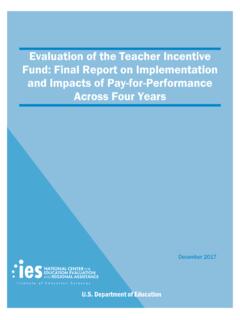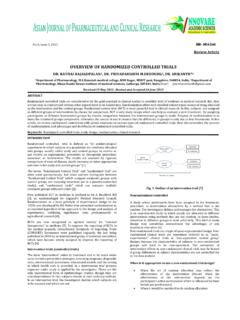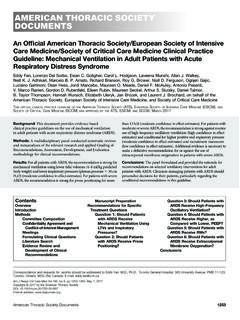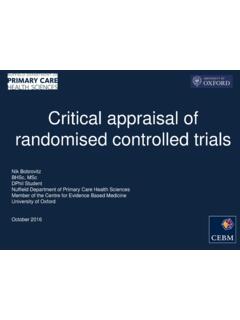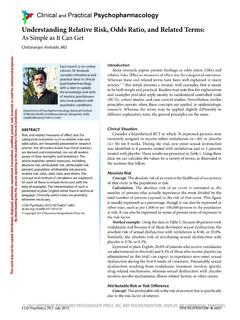Transcription of Improving Adolescent Literacy - Institute of Education ...
1 IES PRACTICE GUIDE WHAT WORKS CLEARINGHOUSE. Improving Adolescent Improving Adolescent Literacy : Literacy : Effective Classroom and Effective Intervention Classroom Practices and Intervention Practices NCEE 2008-4027. DEPARTMENT OF Education . The Institute of Education Sciences (IES) publishes practice guides in Education to bring the best available evidence and expertise to bear on the types of systemic challenges that cannot currently be addressed by single interventions or programs. Authors of practice guides seldom conduct the types of systematic literature searches that are the backbone of a meta-analysis, although they take advantage of such work when it is already published.
2 Instead, authors use their expertise to identify the most important research with respect to their recommendations, augmented by a search of recent publications to ensure that research citations are up-to-date. Unique to IES-sponsored practice guides is that they are subjected to rigorous exter- nal peer review through the same office that is responsible for independent review of other IES publications. A critical task for peer reviewers of a practice guide is to determine whether the evidence cited in support of particular recommendations is up-to-date and that studies of similar or better quality that point in a different di- rection have not been ignored.
3 Because practice guides depend on the expertise of their authors and their group decisionmaking, the content of a practice guide is not and should not be viewed as a set of recommendations that in every case depends on and flows inevitably from scientific research. The goal of this practice guide is to formulate specific and coherent evidence-based recommendations that educators can use to improve Literacy levels among adoles- cents in upper elementary, middle, and high schools. The target audience is teach- ers and other school personnel with direct contact with students, such as coaches, counselors, and principals.
4 The guide includes specific recommendations for edu- cators and the quality of evidence that supports these recommendations. IES PRACTICE GUIDE. Improving Adolescent Literacy : Effective Classroom and Intervention Practices August 2008. Panel Michael L. Kamil (Chair). STANFORD UNIVERSITY. Geoffrey D. Borman UNIVERSITY OF WISCONSIN MADISON. Janice Dole UNIVERSITY OF UTAH. Cathleen C. Kral BOSTON PUBLIC SCHOOLS. Terry Salinger AMERICAN INSTITUTES FOR RESEARCH. Joseph Torgesen FLORIDA STATE UNIVERSITY. Staff Xinsheng Cindy Cai Fiona Helsel Yael Kidron Elizabeth Spier AMERICAN INSTITUTES FOR RESEARCH.
5 NCEE 2008-4027. DEPARTMENT OF Education . This report was prepared for the National Center for Education Evaluation and Re- gional Assistance, Institute of Education Sciences under Contract ED-02-CO-0022. Disclaimer The opinions and positions expressed in this practice guide are the authors' and do not necessarily represent the opinions and positions of the Institute of Education Sci- ences or the Department of Education . This practice guide should be reviewed and applied according to the specific needs of the educators and Education agency using it, and with full realization that it represents the judgments of the review panel regarding what constitutes sensible practice, based on the research that was available at the time of publication.
6 This practice guide should be used as a tool to assist in decisionmaking rather than as a cookbook. Any references within the document to specific Education products are illustrative and do not imply endorse- ment of these products to the exclusion of other products that are not referenced. Department of Education Margaret Spellings Secretary Institute of Education Sciences Grover J. Whitehurst Director National Center for Education Evaluation and Regional Assistance Phoebe Cottingham Commissioner August 2008. This report is in the public domain.
7 While permission to reprint this publication is not necessary, the citation should be: Kamil, M. L., Borman, G. D., Dole, J., Kral, C. C., Salinger, T., and Torgesen, J. (2008). Improving Adolescent Literacy : Effective classroom and intervention practices: A Prac- tice Guide (NCEE #2008-4027). Washington, DC: National Center for Education Evalu- ation and Regional Assistance, Institute of Education Sciences, Department of Education . Retrieved from This report is available on the IES Web site at Alternative Formats On request, this publication can be made available in alternative formats, such as Braille, large print, audiotape, or computer diskette.
8 For more information, call the Alternative Format Center at (202) 205 8113. Improving Adolescent Literacy : Effective Classroom and Intervention Practices Contents Introduction 1. The What Works Clearinghouse standards and their relevance to this guide 3. Improving Adolescent Literacy : Effective Classroom and Intervention Practices 4. Overview 4. Scope of the practice guide 8. Checklist for carrying out the recommendations 9. Recommendation 1. Provide explicit vocabulary instruction 11. Recommendation 2. Provide direct and explicit comprehension strategy instruction 16.
9 Recommendation 3. Provide opportunities for extended discussion of text meaning and interpretation 21. Recommendation 4. Increase student motivation and engagement in Literacy learning 26. Recommendation 5. Make available intensive and individualized interventions for struggling readers that can be provided by trained specialists 31. Conclusion 37. Appendix A. Postscript from the Institute of Education Sciences 38. Appendix B. About the Authors 41. Appendix C. Disclosure of potential conflicts of interest 42. Appendix D. Technical information on the studies 43.
10 References 52. ( iii ). Improving Adolescent Literacy : EFFECTIVE CLASSROOM AND INTERVENTION PRACTICES. List of tables 1. Institute of Education Sciences levels of evidence for practice guides 2. 2. Recommendations and corresponding levels of evidence to support each 7. ( iv ). Introduction reading instruction, we use this informa- tion to make broader points about im- The goal of this practice guide is to present proving practice. In this guide we have specific and coherent evidence-based rec- tried to take findings from research or ommendations that educators can use to practices recommended by experts and improve Literacy levels among adolescents describe how recommendations might ac- in upper elementary, middle, and high tually unfold in school settings.


